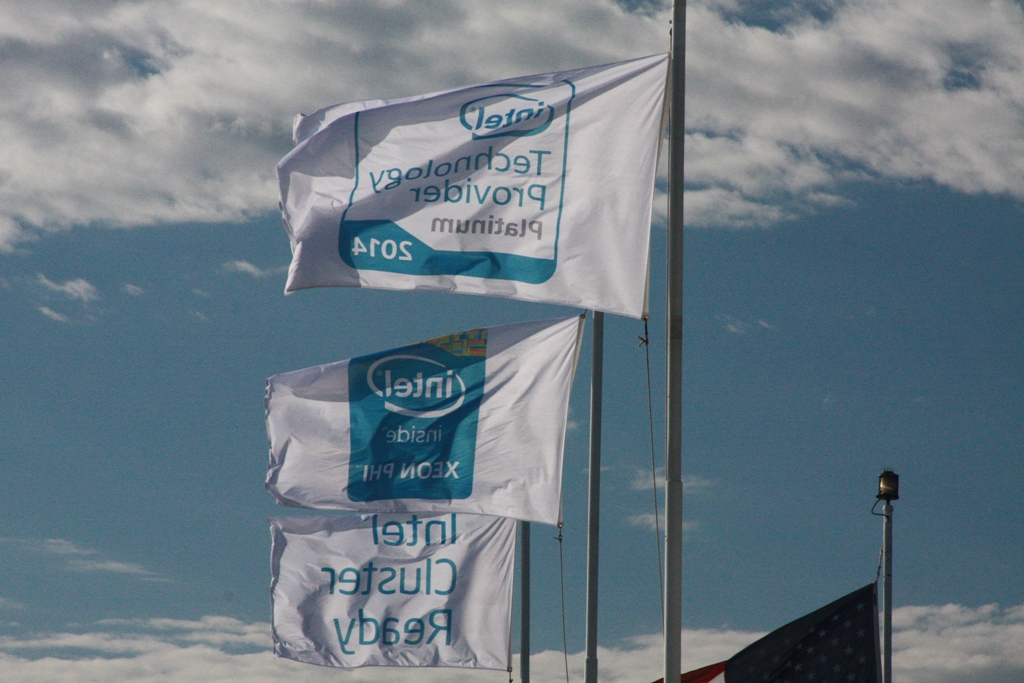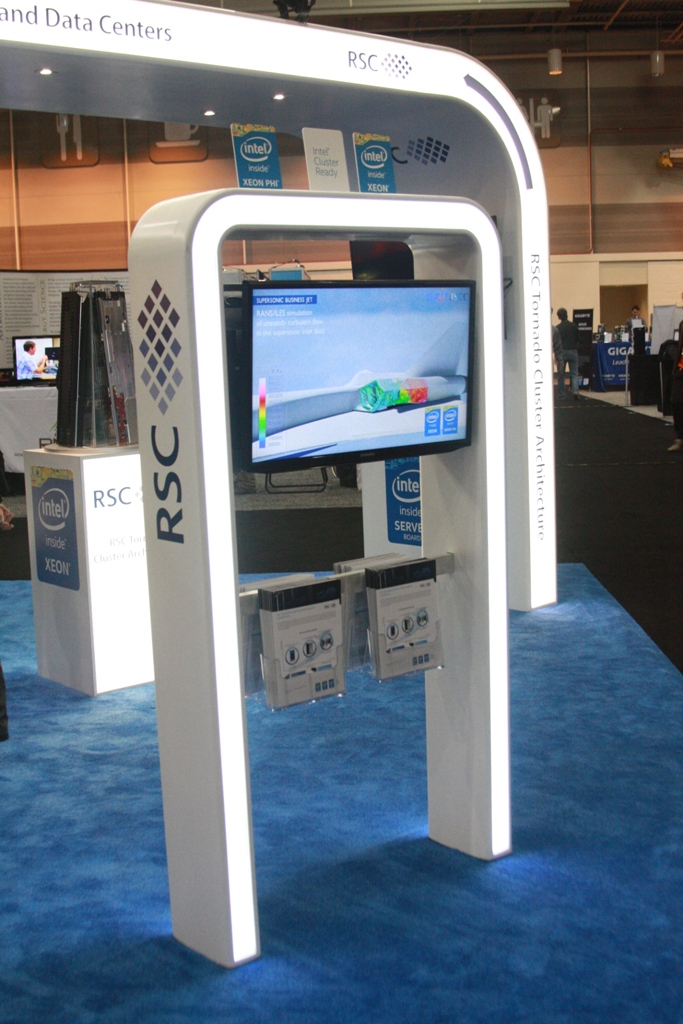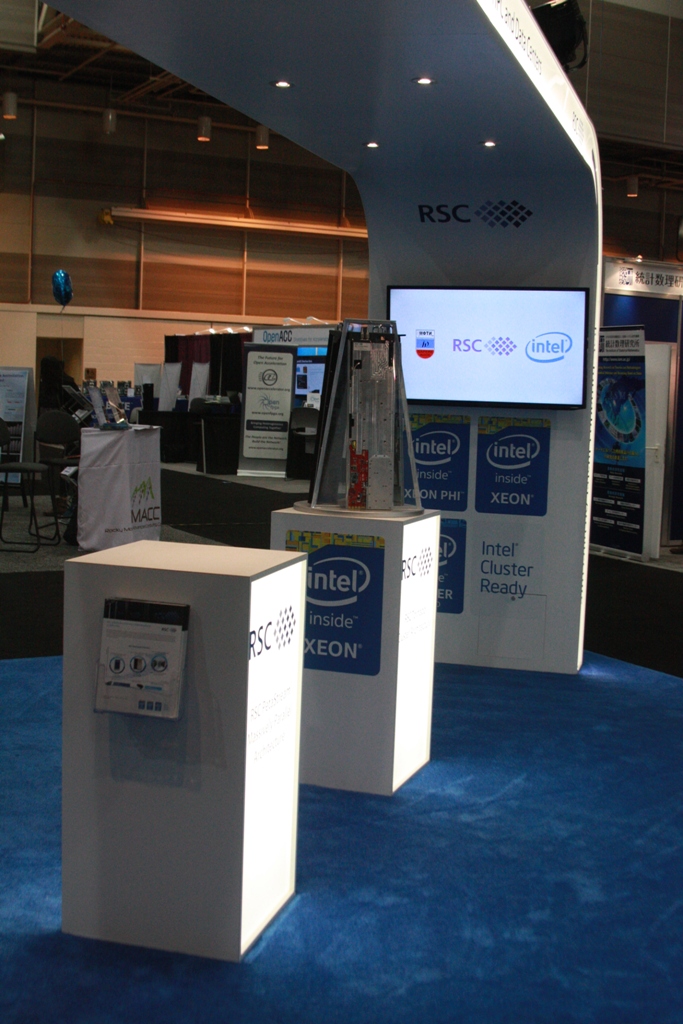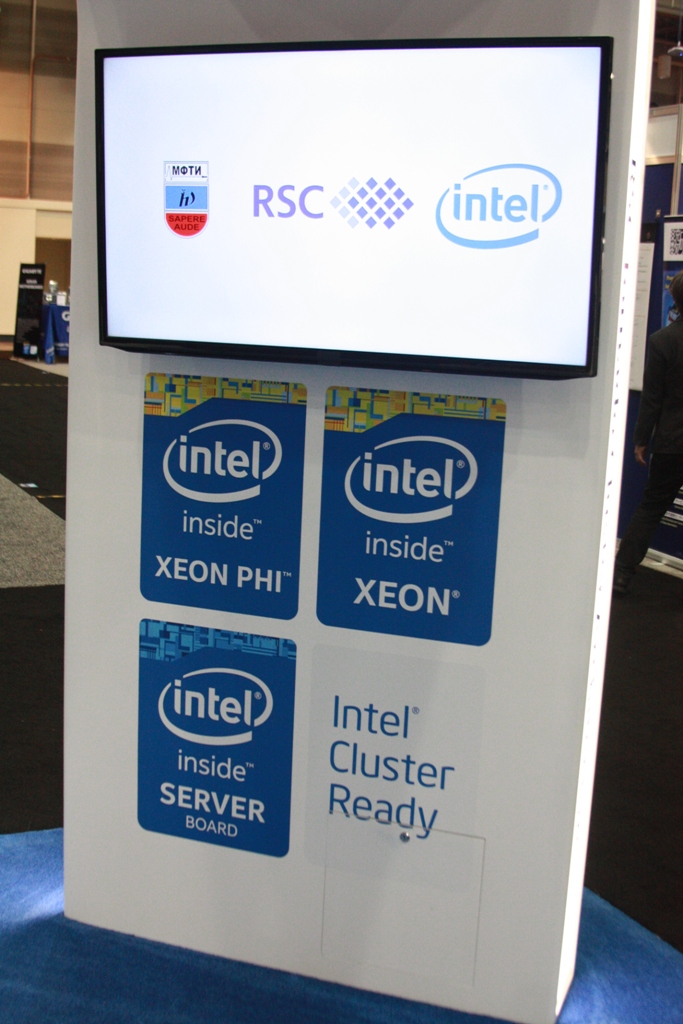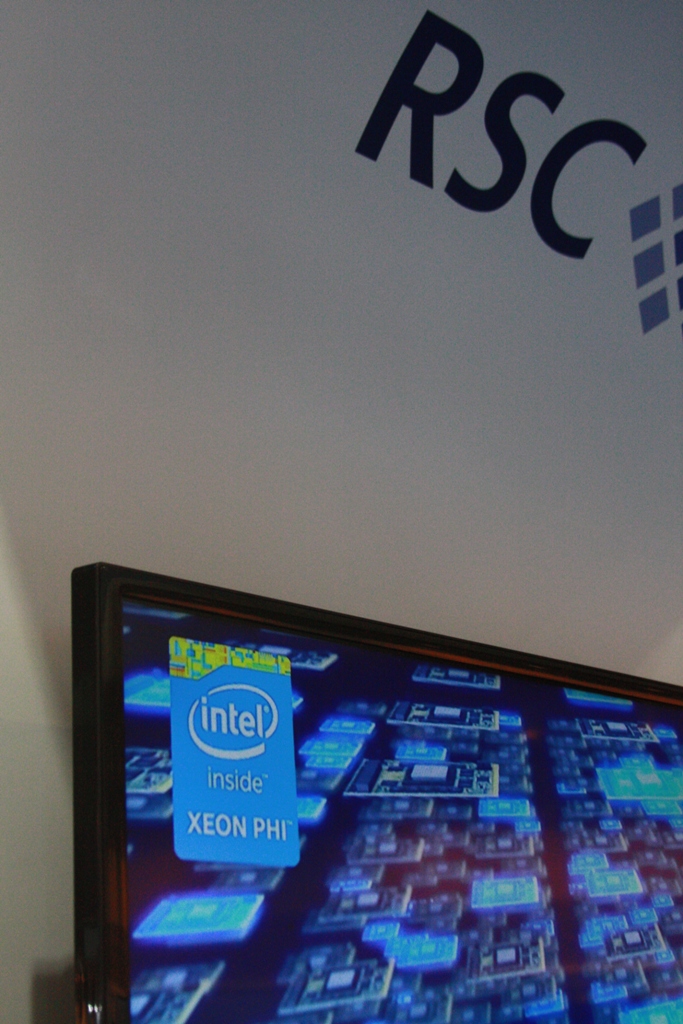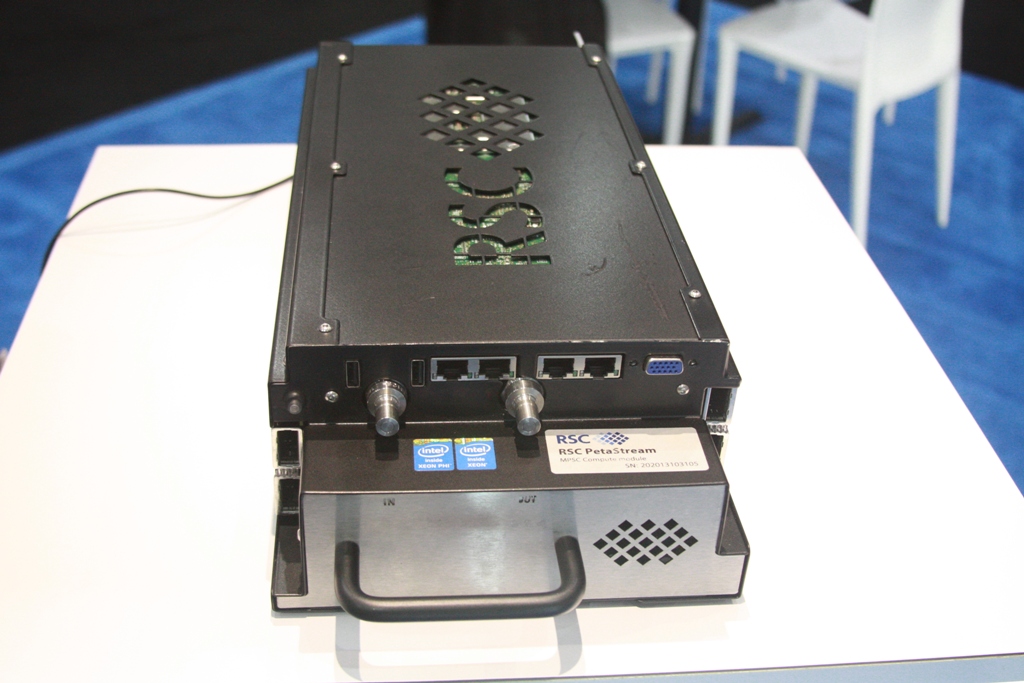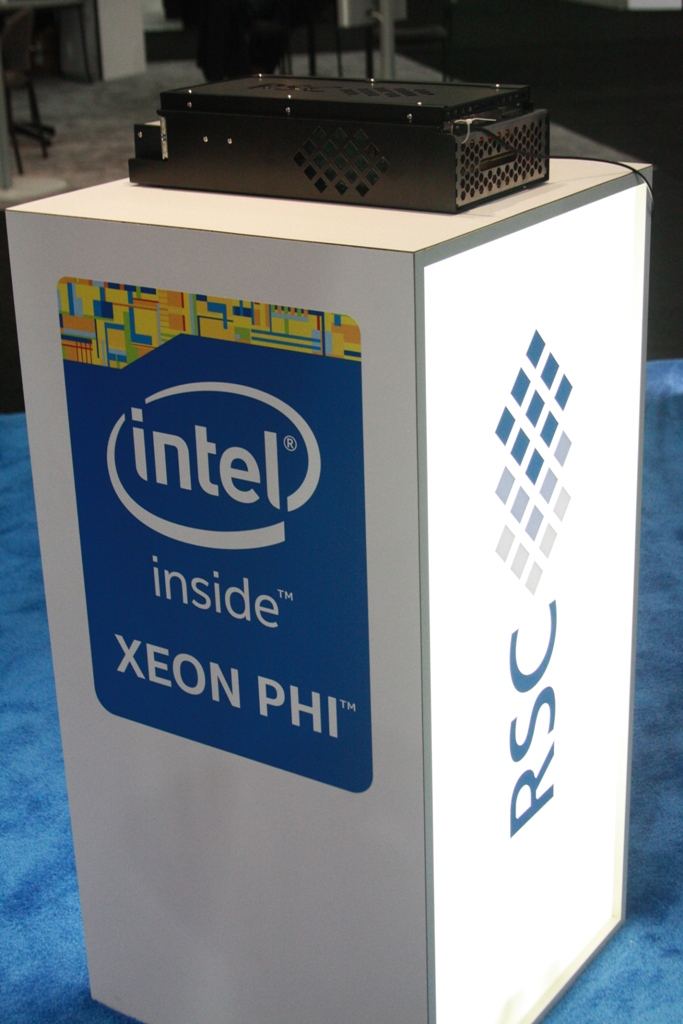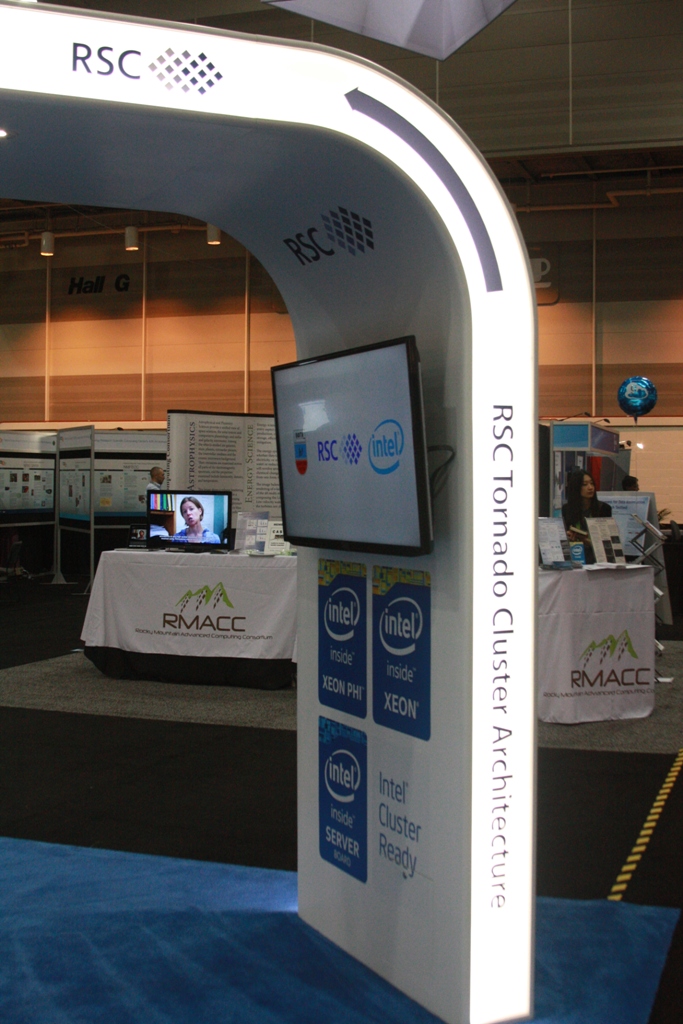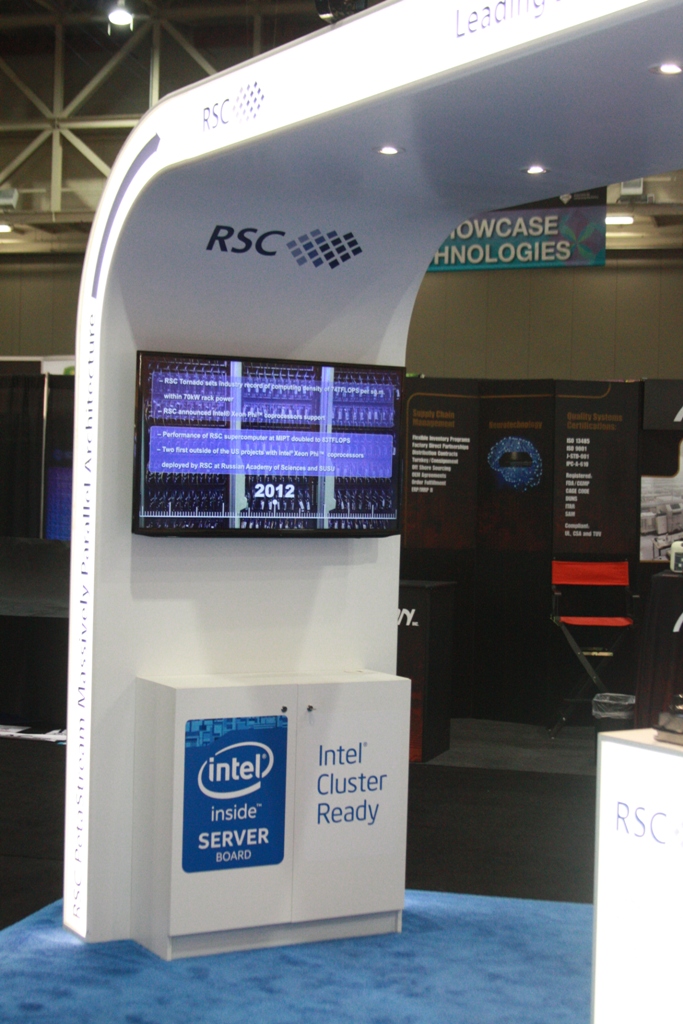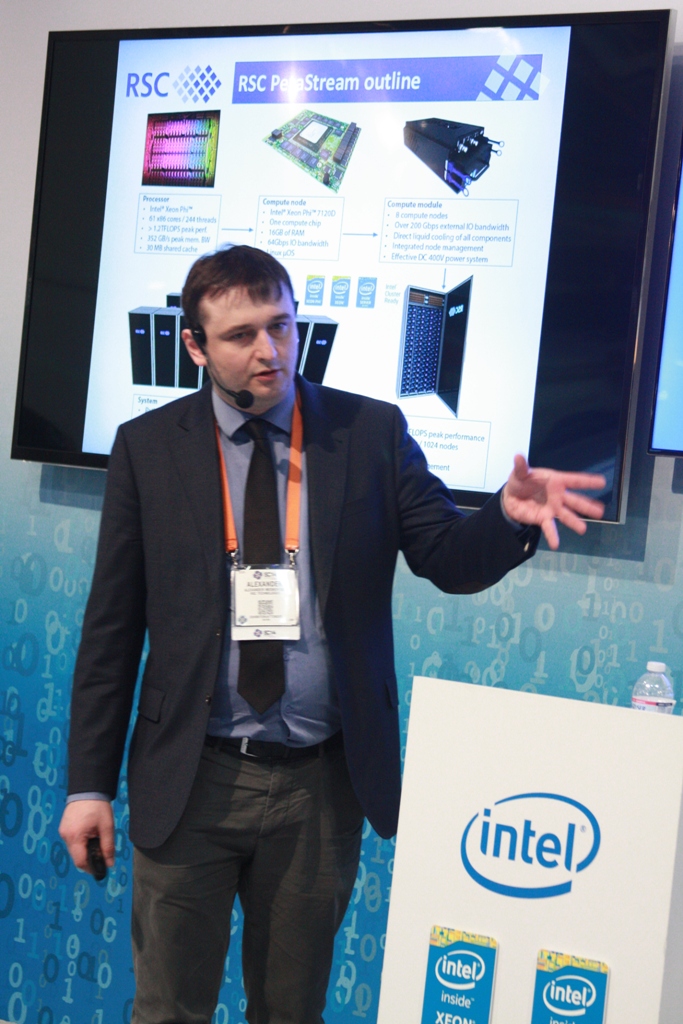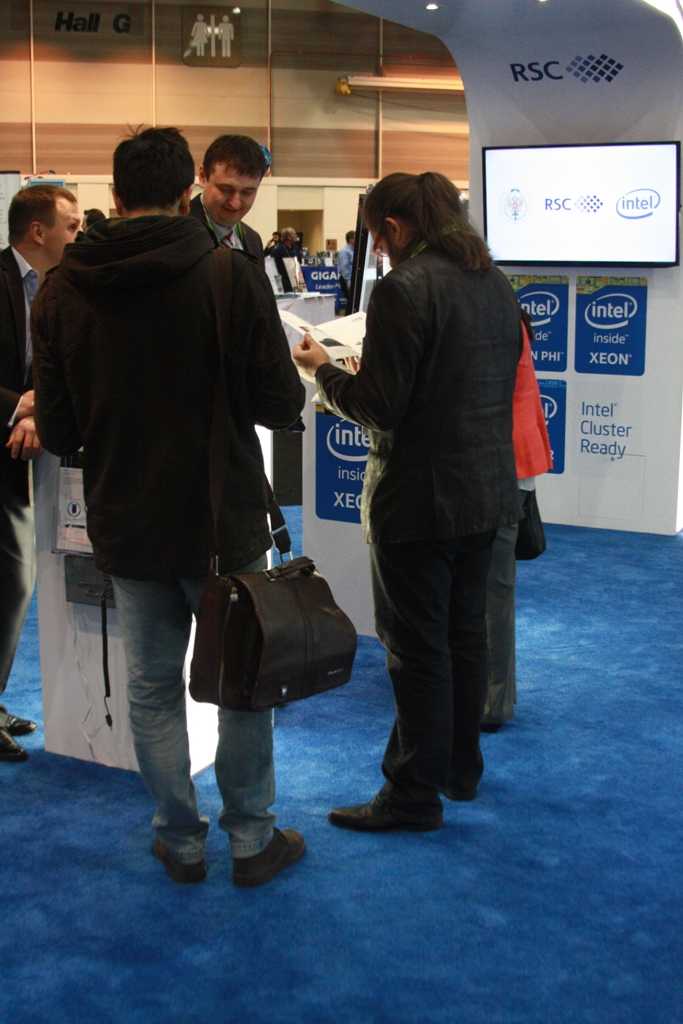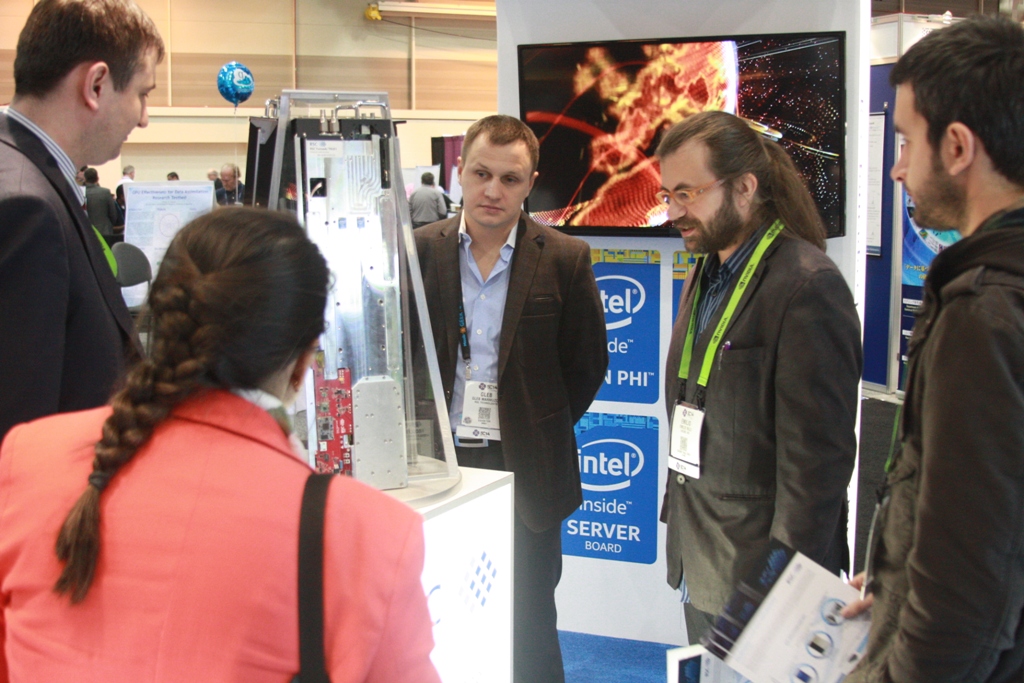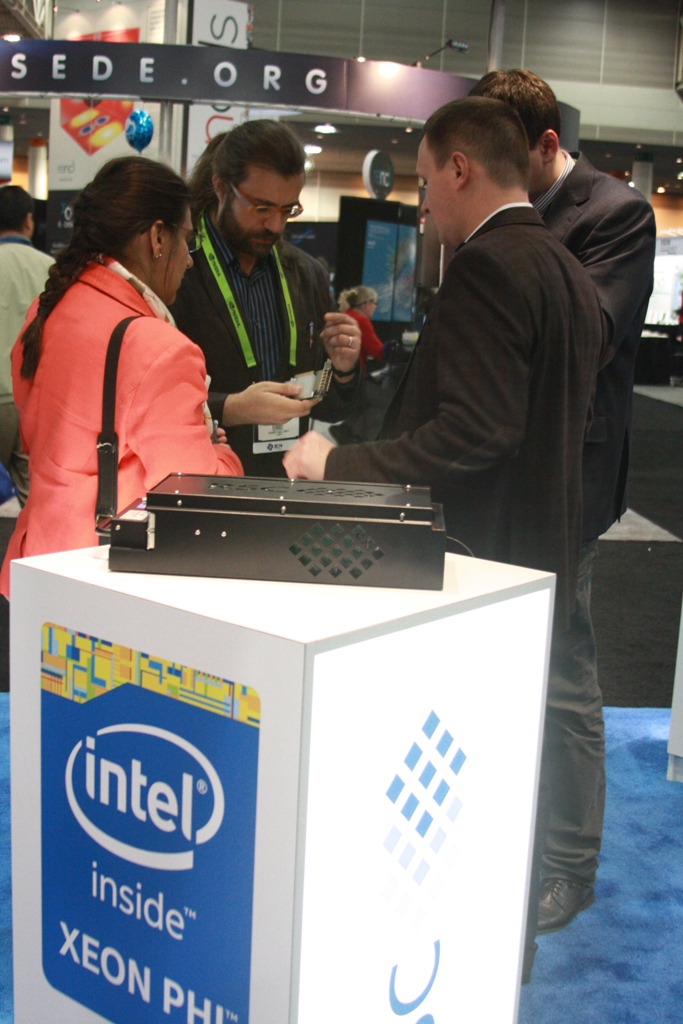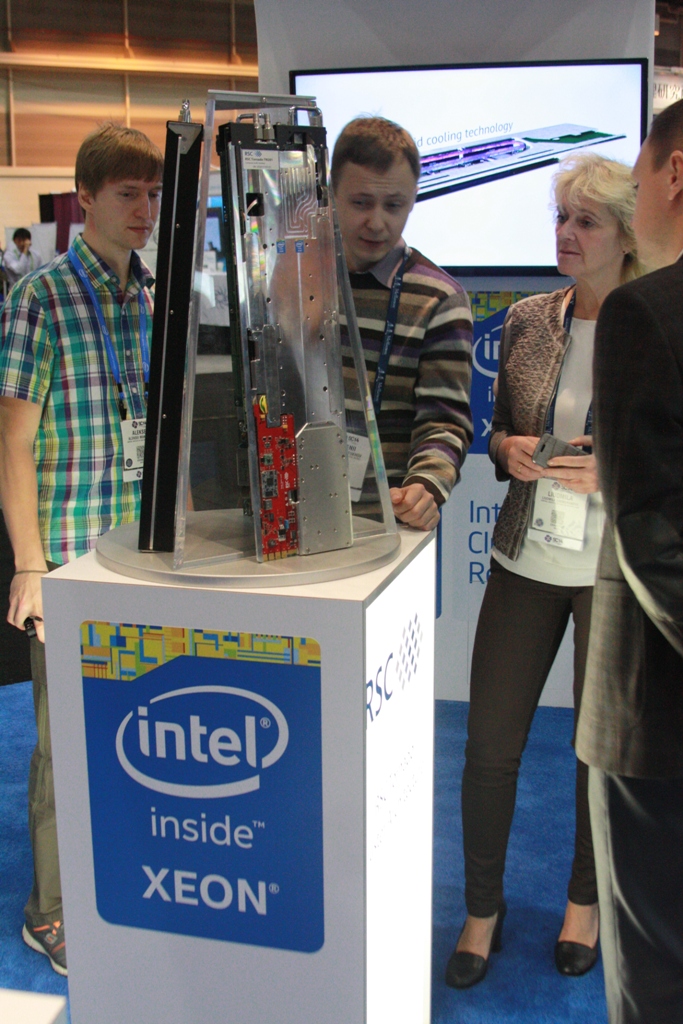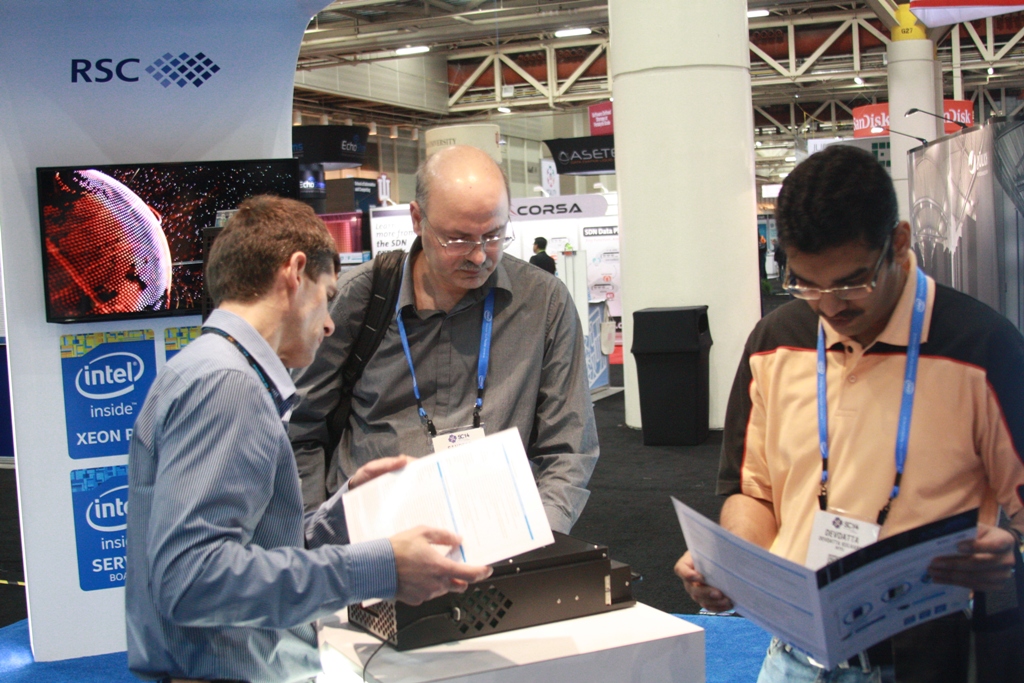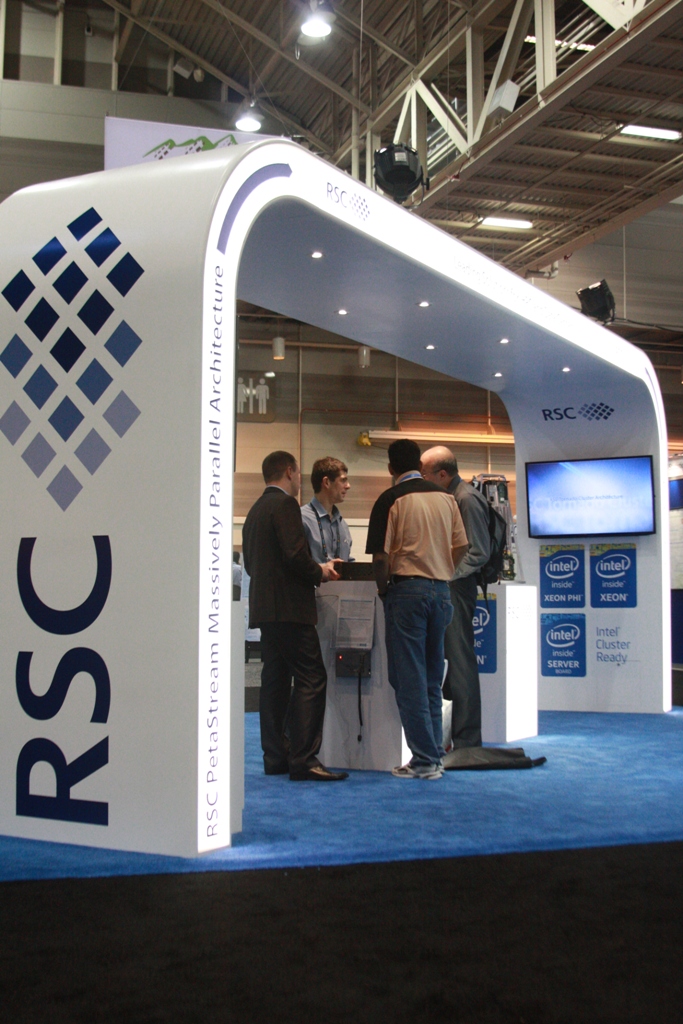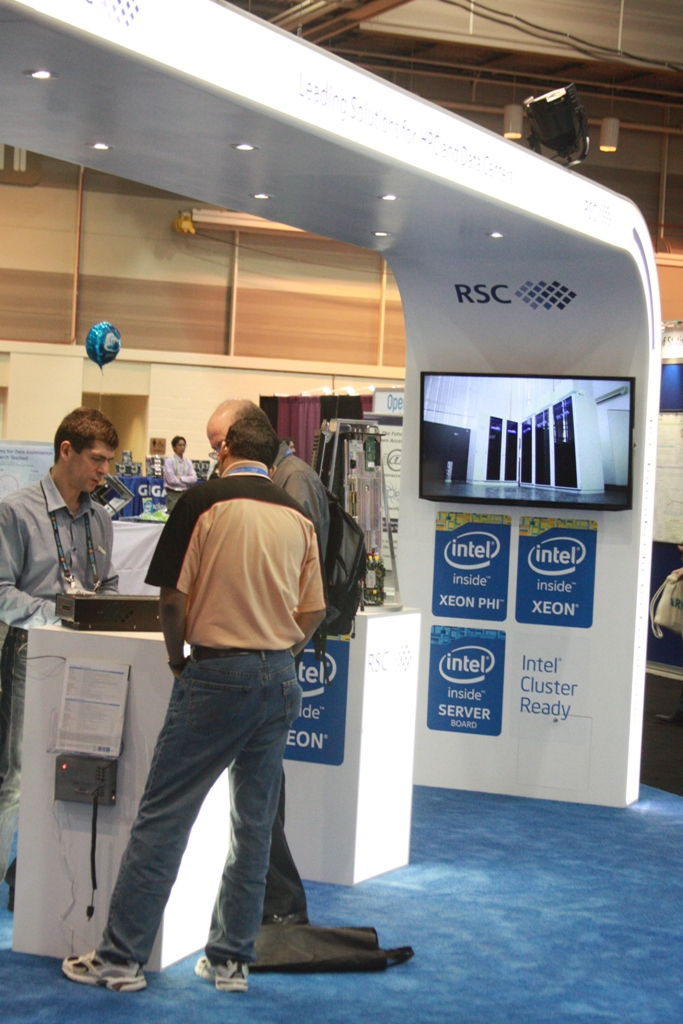Russian RSC Group has doubled its presence in Top500 list of the most powerful supercomputers in the world. New 44th edition of this highly prestigious rating includes four systems built by RSC with direct liquid cooling, which makes this HPC vendor the leader with 44% share among all Russian supercomputers in Top500. For the first time the current edition of Top500 list includes two RSC supercomputers developed for a new HPC data center at the St. Petersburg State Polytechnical University. Polytechnic RSC Tornado cluster system based on RSC Tornado architecture with direct liquid cooling and the latest Intel® Xeon® E5-2697 v3 processors made it to the first hundred in the Top500 rating holding 81th place there.
New Orleans (USA), SC14, November 19th, 2014 — Russian RSC Group has doubled its presence in Top500 list of the most powerful supercomputers in the world. New 44th edition of this highly prestigious rating includes four systems built by RSC with direct liquid cooling, which makes this HPC vendor the leader with 44% share among all Russian supercomputers in Top500. Total peak performance of RSC systems in this global list has exceeded 2 Petaflops. Current edition of the Top500 includes 9 supercomputers from Russia.
For the first time, the Top500 list contains two systems developed by RSC for one of the most innovative and one of the most powerful supercomputing centers in Russia at the St. Petersburg State Polytechnical University (SPbSPU). Polytechnic RSC Tornado immediately made the first hundred and took 81st place with LINPACK performance of 658 Teraflops. New SPbSPU supercomputing cluster based on the RSC Tornado architecture with direct liquid cooling has the peak performance of 829 Teraflops. It is the first project in Russia and CIS based on the newest Intel® Xeon® E5-2600 v3 server processors.
Polytechnic RSC Tornado includes 712 dual-processor nodes containing 1424 high-performance Intel® Xeon® E5-2697 v3 server processors (14 cores, 2.6 GHz frequency each), Intel® S2600KP and Intel® S2600WT server boards for this processor generation and the latest Intel® SSD DC S3500 solid state drives for corporate data centers. These HPC resources will be used not only to solve relevant scientific tasks but also for cloud, VDI (Virtual Desktop Infrastructure) and graphical services.
The second part of the new hybrid HPC resources contains a unique high-density massively parallel RSC PetaStream system with direct liquid cooling and total performance of 258 Teraflops. Polytechnic RSC PetaStream supercomputer has demonstrated LINPACK performance of 170.5 Teraflops and took 390th position in the current edition of the Top500 list. This SPbSPU supercomputing system developed and produced by RSC specialists in Russia is based on 60-core Intel® Xeon Phi™ 5120D and Intel® Xeon® E5-2600 v2 family processors with Intel server boards and Intel SSD DC S3500 solid state drives for enterprise data centers.
A unique feature of RSC PetaStream is the massively parallel architecture based on Intel® Xeon Phi™ enabling execution of up to 250,000 parallel threads on 1024 computing nodes based on x86 architecture in a single cabinet taking just 1 sq.m. The RSC PetaStream massively parallel architecture holds the world records of computing and power density as well as compactness. RSC PetaStream implements an innovative subsystem based on the leading industry standard of 400V DC power developed in cooperation with Emerson Electric. This subsystem enables power distribution efficiency over 90% improving overall energy efficiency of the system, reduction of operating costs and overall reliability of the complex. RSC PetaStream enables development of the latest applications to make breakthroughs in bioengineering, astrophysics, chemistry, radioelectronics and control systems.
The new SPbSPU supercomputers also includes a parallel data storage systems based on Lustre distributed file system that will support an use up to 1 Petabyte of data and a 0.5 PB block-based storage for cloud environments. Both storages use server technologies based on Intel architecture.
Total peak performance of the new SPbSPU supercomputing center after its commissioning planned for 2015 will exceed 1.1 Petaflops. The purpose of SCC is to improve competitiveness of SPbPU as one of the leading Russian educational and scientific institutions using supercomputer technologies to solve relevant scientific tasks, develop hi-tech industrial products and train engineering staff with high competence in mutli-discipline R&D. Scientists of SPbSPU and other R&D organizations of St. Petersburg and Russia will be able to use SCC capabilities to solve relevant scientific tasks in the fields of mechanics, hydrodynamics, aerodynamics, solid physics, plasma physics, material science, electronics, computing and quantum chemistry, biophysics and biotechnologies. Developers and engineers of the university and industrial enterprises will be able to use its CAD/CAM systems to design new machinery and vehicles for power industry, aircraft industry, biotechnologies, radioelectronics. For students and teachers the SPbSPU supercomputing center will become the technology base for deep training of specialists in the fields of computer science and computer engineering.
The current Top500 list also includes two RSC systems based on liquid-cooled RSC Tornado cluster architecture, Intel Xeon server processors, Intel server boards and Intel SSDs. 133th position of the rating is held by MVS-10P supercomputer with peak performance of 523 Teraflops that has been deployed two years ago at the Joint Supercomputer Center of the Russian Academy of Sciences (JSCC RAS). 190th position in the Top500 list is taken by the RSC Tornado SUSU computing cluster with 473 Teraflops peak performance that has been running in South Ural State University (SUSU) in Chelyabinsk since 2009.

